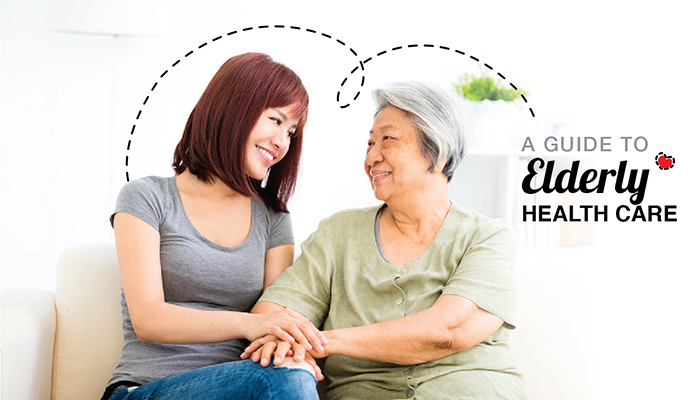A Guide to Elderly Health Care


1. Blood Pressure Monitors
The elderly require consistent and regular blood pressure monitoring as they are susceptible to a myriad of age related illnesses and fainting spells that result in falls, fractured bones and even, death. It is crucial to monitor their blood pressure daily at different intervals of the day to ensure that they are at a healthy blood pressure level and that they do not get faint or dizzy from sitting down or standing up too quickly or suffer from any other ailments. If you wish to learn more about hypertension (high blood pressure), please head over to our other blog post about the importance of blood pressure monitoring by clicking here.

2. Glucometer
Adding to the note of daily blood pressure monitoring, there is also the monitoring of their glucose levels. Glucometers are not only for diabetics but also for the elderly as their body function weakens and changes with time. By monitoring their blood levels, you can determine if they are in good health or a check-up with a doctor is needed. Also, if the elderly is in fact diabetic, regular glucose tests would help with monitoring their blood sugar and aid in determining the effectiveness of their medication and diet.

3. Fall Prevention
As we age, we naturally lose our mobility. Mobility aids are great for the elderly who require extra support to get around so that they don't fall and injure themselves. Not only that, mobility aids give the elderly a sense of freedom, independence and accomplishment as they are still able to go about their day on their own safely, without relying too much on others since they have extra stability. Speaking of stability, it is quite common for an elderly to either lose their balance while putting on or taking off their shoes. A simple aid like the shoe helper takes care of that problem as they will be able to put on and remove their shoes all while standing! Eliminating the risk of falls and dropping blood pressure from bending forwards and standing upright again. Another good tip to prevent falls is to put up motion sensor lights to illuminate dark rooms, passageways or bathroom. The ability to see is crucial for anyone, especially the elderly as their eyesight deteriorates with age. By installing motion sensor lights, you will not only provide light for them to see around the room but also increase their confidence to safely navigate around the home.

4. Sitting Posture
We all know what poor posture and sitting for long hours does to our bodies - tight muscles, back pain and discomfort. If we are having a hard time sitting for a long time and maintaining good posture, it's even harder for the eldery who has lost a lot of their muscle strength. To help combat that, seat cushions like the BackJoy SitzRight Seat Cushion provides not only comfort to the user but also the support they need to improve their posture. Now, they can sit comfortably while watching TV or while spending long hours on a wheelchair!

5. Massage
The elderly tend to lead a comparatively sedentary life. Meaning they don't get much exercise to warm their muscles up so they might experience some stiffness in their bodies. To keep their muscles limber and improve blood circulation, tools like a massage ball or trigger point massager would help them immensely. A massage ball is handy as they could either massage themselves with it or we could do it for them. Just place the ball on a part of their body and start rolling back and forth to keep the blood flowing. They would enjoy it and we won't be too tired from massaging them just using our hands. Another option is the trigger point massager where elderly with good enough arm strength can easily massage themselves anywhere on their body. It is uniquely designed to be able to even reach the back on your own. The best thing to do before a massage is to heat up the muscles with a hot pack or a heat patch to soften the muscles, making it easier for the massage to penetrate deeper into the muscles resulting in good blood circulation and relaxed muscles.

